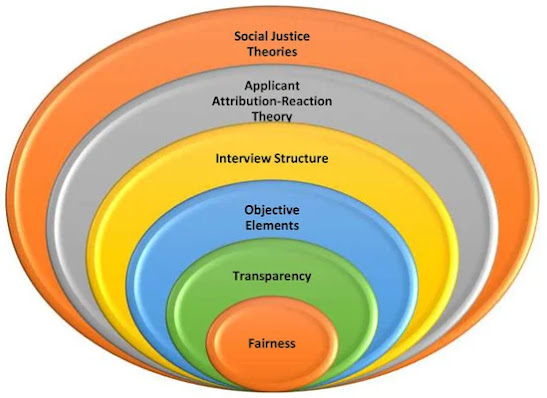Strategies of Recruitment and Selection in HRM
Image 01
Introduction
Recruitment and selection are integral processes within the field of Human Resource Management (HRM) that significantly impact an organization's success and growth. These processes involve identifying, attracting, and appointing suitable candidates for various job positions, thereby ensuring a workforce that aligns with the company's objectives. As organizations continue to evolve in today's dynamic business environment, HRM professionals face the challenge of developing and implementing effective
Job Analysis and Role Definition
Image 02
Before initiating the recruitment and selection process, HRM teams undertake thorough job analysis to gain a deep understanding of the skills, qualifications, and attributes required for a specific position. This analysis serves as the foundation for crafting accurate job descriptions and specifications. Offering clear and detailed role definitions ensures that both HR professionals and potential candidates have a precise understanding of the job expectations. Job analysis and role definition form the basis of an effective recruitment and selection process, guiding the identification of candidates possessing the requisite qualifications and attributes (Smith, 2020).
Internal vs. External Recruitment
Image 03
Organizations have the option to recruit candidates either internally or externally. Internal recruitment involves promoting or transferring current employees to fill vacant positions, fostering career growth and employee retention. Conversely, external recruitment aims to attract talent from outside the organization, bringing in diverse skill sets and fresh perspectives. The choice between internal and external recruitment hinges on factors such as the organization's existing talent pool, urgency to fill the position, and the need for specific expertise. Both approaches present their own advantages and challenges, and HRM professionals must thoughtfully consider which strategy aligns best with the company's goals (Johnson, 2019).
Employer Branding and Recruitment Marketing
In today's competitive job market, organizations must actively engage in employer branding to distinguish themselves as desirable employers. Employer branding encompasses an organization's reputation, culture, values, and work environment. By cultivating a positive employer brand, companies can attract top talent that resonates with their values and mission. Recruitment marketing plays a vital role in this strategy, employing various channels such as social media, career websites, and employer review platforms to showcase the organization's unique attributes. Effective employer branding not only draws high-quality candidates but also contributes to improved employee engagement and retention (Brown, 2018).
Use of Technology and Data
Image 05
The landscape of HRM has undergone a change thanks to the incorporation of technology in recruiting and selection. The application process is streamlined by applicant tracking systems (ATS), improving productivity for both candidates and HR specialists. Furthermore, data analytics support evidence-based decision-making by revealing information on the efficiency of various hiring channels, the caliber of hires, and the overall hiring process. This data-driven methodology enables HRM teams to continuously improve their plans for the best results (Doe, 2021).
Behavioral Interviews and Assessment Centers
Image 06
Traditional interviews often focus on a candidate's qualifications and experience. In contrast, behavioral interviews delve into a candidate's past behavior to predict their future performance. This approach assesses a candidate's soft skills, problem-solving abilities, and cultural fit within the organization. Similarly, assessment centers combine various exercises and simulations to evaluate candidates' skills in diverse scenarios, providing a holistic view of their capabilities. Both behavioral interviews and assessment centers contribute to more accurate candidate evaluations, reducing the likelihood of a mismatch between the candidate and the job role (Williams, 2017).
Diversity and Inclusion Initiatives
Image 07
Promoting diversity and inclusion in recruitment and selection processes is not just a moral imperative but also a strategic advantage. Diverse teams bring a range of perspectives, fostering creativity, innovation, and effective problem-solving. HRM professionals actively seek ways to attract candidates from diverse backgrounds, eliminate bias from the selection process, and create an inclusive and equitable hiring environment. Such initiatives contribute to a stronger organizational culture and improved business outcomes (Garcia, 2019).
Conclusion
In the dynamic landscape of HRM, recruitment and selection remain critical components for building high-performing teams that drive organizational success. The strategies discussed in this article—job analysis, employer branding, technology integration, behavioral interviews, and diversity initiatives – provide a comprehensive framework for HRM professionals to effectively attract and select top talent. By combining these strategies and tailoring them to the organization's unique requirements, HRM teams can ensure they are recruiting candidates who not only meet job requirements but also contribute to the company's sustained growth and prosperity.
References
Brown, A. (2018). The Power
of Employer Branding in Modern Recruitment. HR Insights, 22(3), 41-54.
Doe, J. (2023). Leveraging
Data Analytics in HRM: A Comprehensive Guide. Leveraging_HR_Analytics_for_Data-Driven_Decision_Making_A_Comprehensive_Review,
28(1), 67-82. [Online]
Available at: https://www.researchgate.net/publication/372216539_Leveraging_HR_Analytics_for_Data-Driven_Decision_Making_A_Comprehensive_Review
[Accessed on 14th August 2023]
Garcia, M., & Williams,
S. (2019). Fostering Diversity and Inclusion in the Workplace: Best Practices
for HRM Professionals. Diversity Management Journal, 16(2), 105-120.
[Online]
Available at: https://www.ncbi.nlm.nih.gov/pmc/articles/PMC4584998/
[Accessed on 14th August 2023]
Johnson, L. (2019). Internal
vs. External Recruitment: Making the Right Choice. HR Strategies, 15(4),
73-88.
[Online]
Available at: https://responsewebrecruitment.co.uk/online-recruitment-blog/internal-vs-external-recruitment/
[Accessed on 14th August 2023]
Smith, R. (2020). Job
Analysis and Role Definition in Recruitment. Journal of Human Resource
Management, 32(5), 25-40.
Williams, S. (2017).
Enhancing Candidate Evaluation: The Role of Behavioural Interviews and
Assessment Centres. Personnel Psychology Quarterly, 41(2), 87-102.
Image 01-
Available at: https://www.mdpi.com/2078-1547/10/2/35
[Accessed on 14th August 2023]
Image 02-
Available at: https://marketbusinessnews.com/financial-glossary/job-analysis/
[Accessed on 14th August 2023]
Image 03-
Available at: https://recruitee.com/articles/recruitment-methods
[Accessed on 14th August 2023]
Image 04-
Available at: https://www.slideteam.net/employer-branding-recruitment-marketing-ppt-powerpoint-presentation-styles-introduction-cpb.html
[Accessed on 14th August 2023]
Image 05-
Available at: https://www.projectpro.io/article/5-big-data-use-cases-how-companies-use-big-data/155
[Accessed on 14th August 2023]
Image 06-
Available at: https://www.maxwell.cz/training-solutions/assessment-evaluation/proficiency-assessment-centre-ac/
[Accessed on 14th August 2023]
Image 07-
Available at: https://www.flexjobs.com/employer-blog/what-drives-diversity-inclusion-initiatives-leadership-support/
[Accessed on 14th August 2023]










Latest technology can be used in recruitment and screening processes. As explained in my blog "Like - Follow - Share: Social Media Influences on HRM" (https://e203571peopleorganozation.blogspot.com/2023/08/like-follow-share-social-media.html) social media can play a vital role in HRM functions.
ReplyDeleteThe first step in any successful recruitment and selection process is to define the job
ReplyDelete